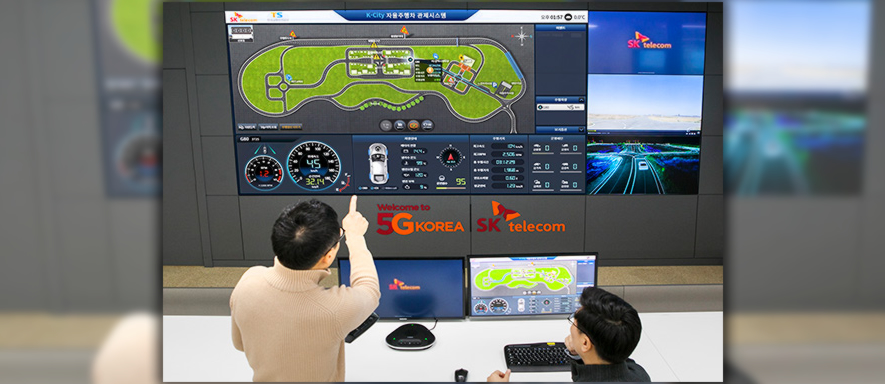South Korean telecom provider SK Telecom announced that the company, along with Korea Transportation Safety Authority (KOTSA), successfully deployed 5G infrastructure in K-City, the country’s pilot city for self-driving. It is the world’s first 5G infrastructure-equipped test autonomous driving city.
Working closely with KOTSA, SK Telecom successfully deployed 5G infrastructure, including test network with 20Gbps download capacity, which allows downloading a 1GB video file in 0.4 seconds, 5G communications control center that transfers data to a test vehicle in less than 0.001 second, and 3D HD map with high accuracy of less than 20cm. The accomplishment was made in just three months since the beginning of 5G infrastructure set-up.
K-City achieved an end-to-end system, meaning that both wireless and wired slots in the facility are connected in a 5G network. To realize its 5G infrastructure, the latest 5G technologies -- 5G virtualization, beamforming and beam-tracking -- were adopted.
This indicates that K-City will serve as a “5G self-driving outpost” where domestic companies and organizations can test their 5G autonomous driving technology and speed up their technological development. There isn’t a self-driving city equipped with 5G technology anywhere in the world.
K-City, located in Hwaseong, southwest of Seoul, has a total area of around 363,000 m2. It has a variety of test driving lanes that resemble real world driving conditions such as a school zone and bus-only lane.
“We will keep developing 5G infrastructure in K-City so that we can make it at the forefront of 5G self-driving,” said Park Jin-hyo, EVP, ICT R&D Center at SK Telecom. Lee Jong-ho, Senior Vice President and Vehicle Unit Leader at SK Telecom, said, “We will continue to work with KOTSA to make K-City a mecca for self-driving research and development.”
5G is a core infrastructure that is necessary to realize V2X (Vehicle to Everything) technologies including vehicle to vehicle communications and vehicle to IoT/control center communications. Utilizing 5G infrastructure, autonomous driving can predict accidents by sharing information on driving and data on surrounding area.





